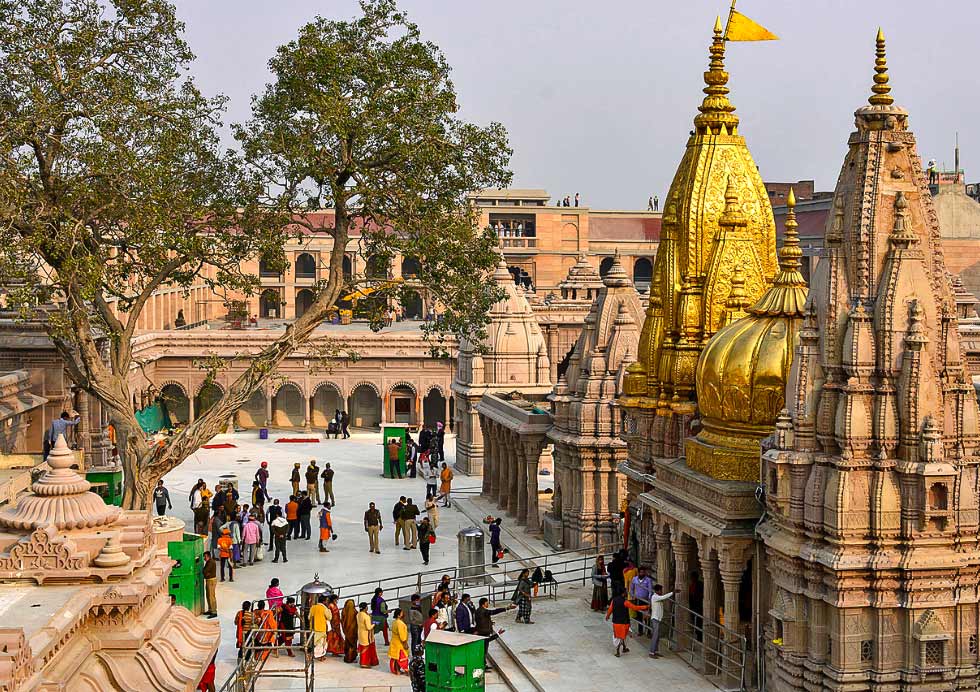Kasi visvanath
Nestled in the heart of Varanasi, the Shri Kashi Vishwanath Temple stands as a beacon of spirituality and devotion, drawing millions of pilgrims from around the world. As you approach this sacred site, the air is thick with history, devotion, and the unmistakable presence of Lord Shiva. His divine energy resonates through the very stones of the temple, filling the surroundings with a sense of peace and reverence. Known as the lord of destruction and regeneration, Shiva embodies the perfect balance of creation and destruction, both fierce and compassionate.
In Varanasi, this energy is palpably felt. The Kashi Vishwanath Temple is not just a physical structure, but a living symbol of Shiva's eternal power. For millions, it is believed that by visiting this holy site and offering prayers to the sacred Shivling, one can attain liberation (moksha) from the cycle of life and death. The temple's presence is a constant reminder of Shiva’s grace and transformative energy—an embodiment of cosmic forces that govern the universe.
The temple, originally built in ancient times, has witnessed destruction, renovation, and rebirth. It is said to be the place where Lord Shiva resides in his most sacred form – the Shivling. While the exact age of the original temple is a subject of debate, it has been a major center of worship for over 2000 years.
The Divine Bargain
One of the most captivating legends tells of how Shiva and Parvati made Kashi their home. It’s said that when Shiva first arrived here, he was so enchanted by its spiritual energy that he refused to leave. The gods, fearing that his presence would make humans too powerful (since Kashi grants instant liberation), tried to persuade Mahadev to return to Mount Kailash. But Shiva compromised—he would stay in Kashi as Vishwanath (Lord of the Universe), while his cosmic form remained in the Himalayas.
The Hidden Jyotirlinga
Another tale speaks of how the original Jyotirlinga was hidden in the Gyanvapi well to protect it from invaders. Even today, devotees believe that the true power of Kashi Vishwanath lies not just in the visible lingam, but in the sacred waters of Gyanvapi, where Shiva’s energy still resides.
The History of Kashi Vishwanath Temple: Destruction, Devotion, and Rebirth
Kashi Vishwanath’s history is a testament to resilience—a story of repeated destruction and unshakable faith.
The Repeated Attacks
In 1194 CE, the original temple was destroyed by Qutb-ud-din Aibak, the general of Muhammad Ghori. In 1669 CE, Aurangzeb razed the rebuilt temple and constructed the Gyanvapi Mosque over its remains. Yet, each time the temple was destroyed, devotees secretly continued worship—sometimes offering prayers to a hidden lingam, sometimes whispering Shiva’s name in the shadows
Then in 1585 CE, Raja Todar Mal, Akbar’s Hindu finance minister, rebuilt the temple during a brief period of religious tolerance. Later, in 1780 CE, the indomitable Ahilyabai Holkar, queen of Indore, constructed the current temple adjacent to the mosque, ensuring that Shiva’s worshipwould never fade.


0 Comments:
Post a Comment
Subscribe to Post Comments [Atom]
<< Home